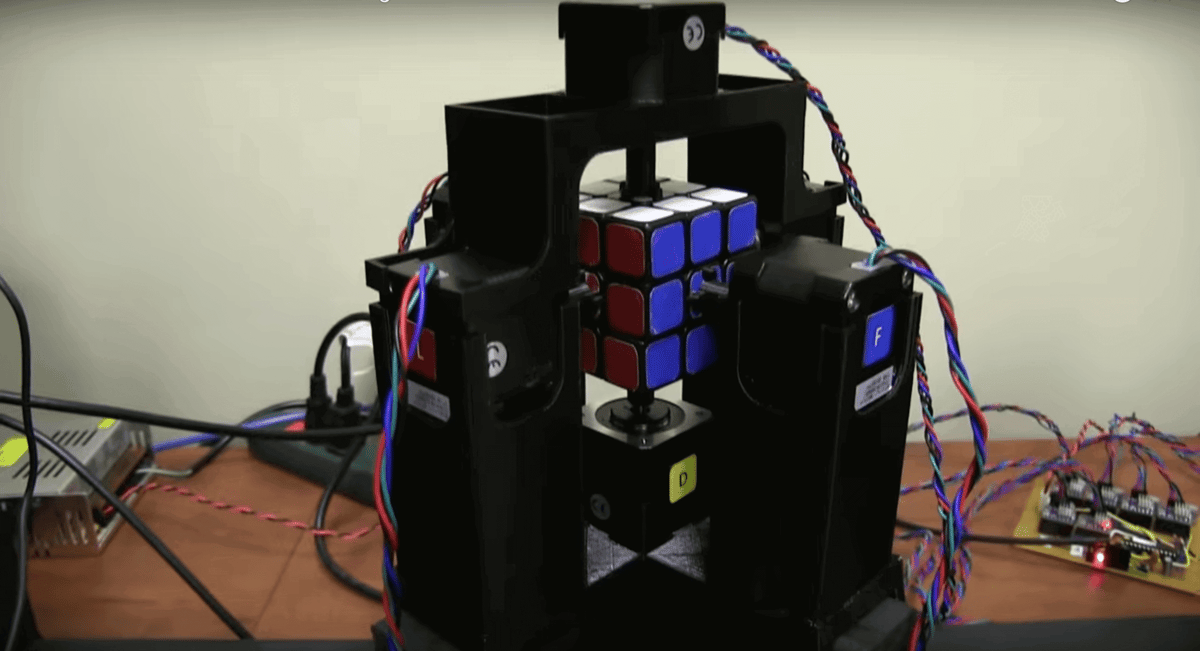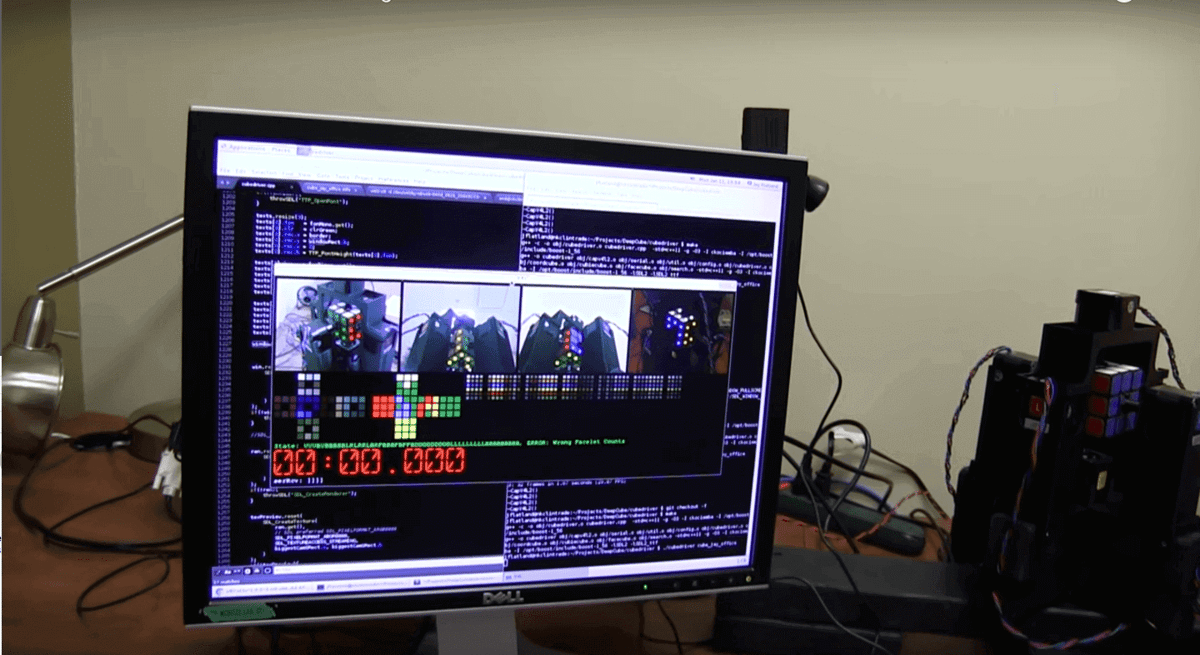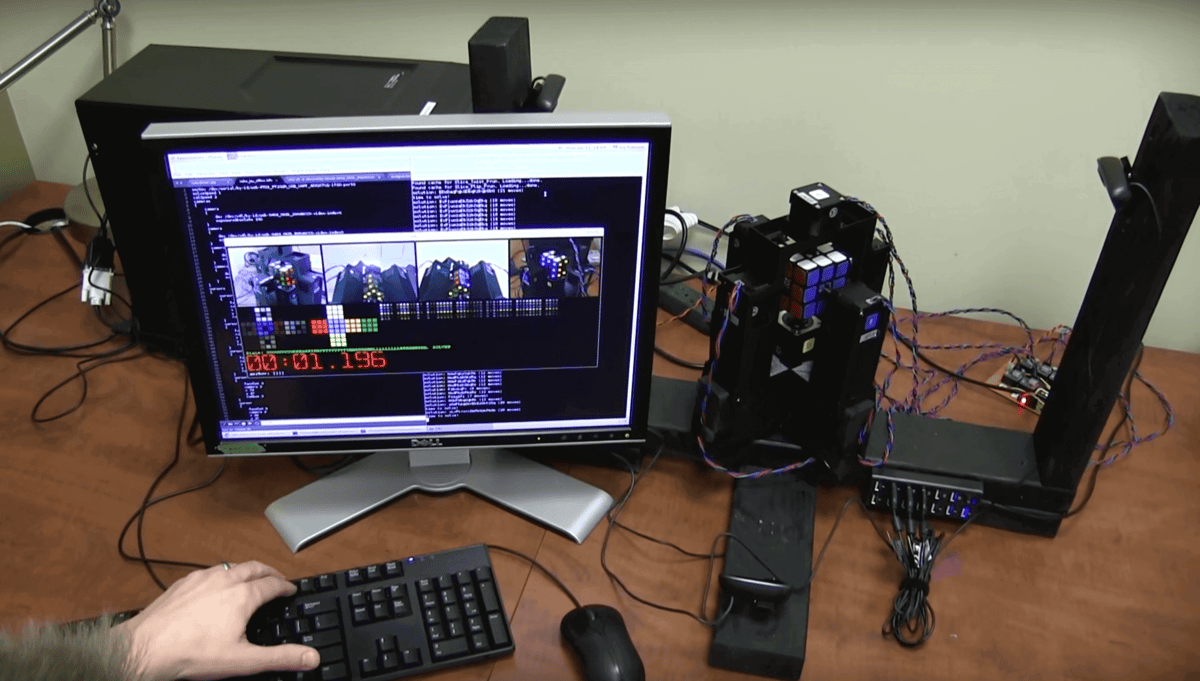The Rubik’s Cube, now over forty years old, is still going strong – so much so that two guys built a machine that solves it in under two seconds-
3D printing is doing a lot for Rubik’s Cube fans recently. Not only has a 22 x 22 cube been fully 3D printed, there is now a robot which can solve a standard Rubik’s Cube in under two seconds too.
YouTubers Jay Flatland and Paul Rose uploaded a video in which they manage to use a 3D printed solving machine to set an impressive new world record of less than two seconds.
The trick behind solving a Rubik’s Cube is to remember that simply turning corners won’t get you anywhere. The trick is to form a series of patterns which will solve the puzzle a lot more quickly and achieve the goal of getting one side to be purely one colour.
This robot smashes the already impressive world records which are currently just 3.253 seconds for a machine and an incredible 4.904 for human, Lucas Etter.
The impressive result isn’t just a one-off either – Jay and Paul’s machine completes the cube four separate times, in 1.196 seconds, 1.152 seconds, 1.047 seconds, and 1.019 seconds, shown in the video below. Of course, this just shows that the machine is a lot more consistent in solving than a human!
How Does the 3D Printed Machine Work?
The robot functions thanks to four stepper motors that hook onto the cube, which are held in a custom 3D printed enclosure, and four USB webcams.
These webcams are hooked up to a PC and the cube is scanned to determine its configuration, the information is then fed into the Kociemba Rubik’s Cube solving algorithm, meaning the robot can make the appropriate moves.
The important modification, which the Rubik’s Cube has to have, is four holes which are drilled into the middle of each of the sides to allow the machine to manipulate it.
As the robot can only function when all four cameras have visibility, in order to start, a camera is first covered with a piece of paper to block the algorithm – this gives the user time to manually scramble the cube.
After the machine is plugged in and the paper is removed, the program can then collect data as quickly as possible which then sends commands to the stepper motors.
Although this machine appears to deserve the world record title, Jay and Paul are yet to have their application approved!
How do you feel about this machine? Do you think using a robot is cheating?
License: The text of "3D Printed Robot Solves a Rubik’s Cube in Under Two Seconds" by All3DP is licensed under a Creative Commons Attribution 4.0 International License.



